Transform Your Bathroom with a Walk-In Shower Guide
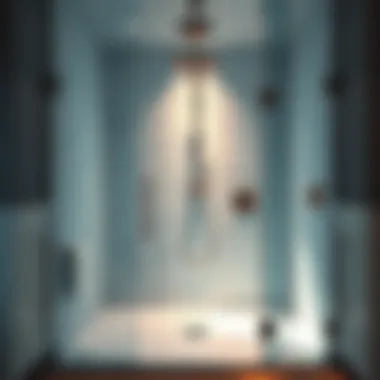

Intro
A bathroom isn’t just a place for personal hygiene anymore; it’s becoming a sanctuary,a retreat from the hustle and bustle of daily life. Among the elements transforming this space, walk-in showers are not just functional, they're making bold statements. This guide ventures into the world of walk-in showers, spotlighting their rising popularity, various design choices, and the sheer joy of customization. If your bathroom feels cramped or outdated, this could be your chance to turn it into a spa-like oasis.
Current Trends
Color Palettes
As trends in home design evolve, so does the palette used in bathrooms. Gone are the days of stark whites and dull beiges dominating the scene. Nowadays, rich, earthy tones, like deep greens and warm terracottas, are taking center stage. They're not just colors; they’re moods, bringing an essence of nature indoors. If you’re looking for something a tad more vibrant, consider soft pastels or muted jewel tones that can liven up your space without overwhelming it.
- Deep greens
- Warm terracottas
- Soft pastels
- Muted jewel tones
Popular Styles
Walk-in showers come in various styles, each catering to different aesthetic preferences and functional needs. Here are some of the leading contenders:
- Minimalist: Characterized by clean lines and simplicity, a minimalist walk-in shower often features a glass enclosure, allowing it to blend seamlessly into the bathroom.
- Rustic: Incorporating natural stone or wood finishes brings a cozy, homey feeling. Often used in country-style homes, a rustic setup elevates the charm factor significantly.
- Luxury Spa: Think rainfall shower heads, natural light, and high-end finishes. This style focuses on creating a lavish experience in the comfort of your home.
- Industrial: Raw materials like metal, glass, and concrete create a modern, edgy look. The juxtaposition of sleek and rough elements can be intriguing.
Choosing a style often comes down to personal preference and how it fits within the overall bathroom design while ensuring functionality is not sacrificed.
"The right shower can make the difference between a good day and a great day. Just imagine stepping into a serene space designed just for you!"
Visual Ideas
Gallery of Styled Bathrooms
A look at vividly styled bathrooms can provide inspiration beyond just imagination. With numerous platforms available, sites like Pinterest and Houzz serve as visual playgrounds for homeowners, enabling them to gather ideas and mix and match aspects they find appealing.
Before-and-After Transformations
There’s something uniquely satisfying about watching a bathroom transform from a dated space to a modern haven. Renovation projects documented in various online forums often showcase dramatic shifts. A simple replacement of standard fixtures, a shift in color, or the addition of a well-placed walk-in shower can breathe new life into a space that had long been considered finished.
For more ideas and inspiration, you might want to check these resources:
Explore these trends and visual ideas, and you’ll soon feel the excitement of crafting your dream bathroom, complete with a walk-in shower that speaks to your personal style.
Intro to Bathroom Remodels
Remodeling a bathroom can feel like embarking on a journey into a world of potential. The significance of this space extends well beyond mere functionality. It's where we start and end our days, a sanctuary where moments of solitude intertwine with routine. An effectively designed bathroom cultivates not only aesthetic pleasure but also enhances the overall value of your home. As such, the decision to renovate is not just about changing tiles or fittings—it’s about creating a serene escape that mirrors personal style and meets practical needs.
Understanding Bathroom Spaces
Bathrooms come in all shapes and sizes, reflecting the diverse ways in which we use them. A small powder room often serves a very different purpose than a master bath meant for relaxation. It's essential to assess how the available space can be optimized. Considerations might include:
- Layout: The arrangement of fixtures and how they interact with each other.
- Traffic Flow: How movement through the space feels; there's nothing worse than tripping over a toilet when rushing.
- Storage Needs: Forgotten toiletries and cleaning supplies can clutter a bathroom fast.
Clever use of space changes everything. For instance, incorporating recessed shelving or built-in cabinets can make a world of difference, allowing you to maintain a clean and organized environment. Moreover, the intuitive design can significantly improve daily convenience. It's akin to having your life simplified, one tidy drawer at a time.
The Growing Trend of Walk-In Showers
In recent years, walk-in showers have surged in popularity, becoming not just an upgrade but a trendsetter in bathrooms. Why, you may wonder? The answer lies in their perfect blend of versatility and elegance.
They come with distinct advantages:
- Accessibility: These showers cater to all ages and abilities, nearly eliminating the chances of slips and falls with their open designs and easy entry.
- Minimalist Design: The clean lines and absence of a bulky enclosure create an illusion of space, making even the coziest bathrooms feel roomier.
- Design Freedom: With various sizes and styles, from sleek tiles to natural stones, the customization options are practically limitless.
Walk-in showers embody a new wave of modern bath architecture, where homeowners prioritize both form and function. Whether you’re embracing contemporary chic or a more rustic vibe, a walk-in shower adapts beautifully, serving as a centerpiece that elevates the experience.
"A bathroom remodel is not just a change; it's an investments in life's daily pleasures."
Key Benefits of Walk-In Showers
Walk-in showers have become a staple in modern bathroom designs, and for good reason. They offer a multitude of advantages that go beyond mere style. Understanding these benefits is pivotal for homeowners contemplating a remodel or simply seeking a bathroom update. The allure of walk-in showers lies not only in their aesthetic charm but also in the accessibility, convenience, and space optimization they provide. Let’s delve into these key benefits in detail.
Accessibility and Convenience
One of the most significant advantages of walk-in showers is their accessibility. Unlike traditional showers that often require stepping over a tub or a high threshold, walk-in models are designed at ground level. This design eliminates potential hazards, making them an excellent choice for individuals with mobility issues or the elderly.
“Safety in the bathroom is paramount; walk-in showers reduce the risk of slips and falls significantly.”
The convenience factor cannot be overstated. Many walk-in showers feature wide openings and ergonomic designs that allow easy entry and exit. Moreover, having no curtain or sliding door means less hassle when trying to maneuver in tight spaces. It’s about making the bathing experience as seamless as possible. Some homeowners even customize their walk-in showers with grab bars or built-in seating, which further enhances usability.
Aesthetic Appeal
Walk-in showers are undeniably a visual delight. They can transform a mundane bathroom into a spa-like oasis, exuding elegance and tranquility. The sleek lines and minimalist designs of walk-in showers make them appealing to a variety of tastes. Consider the following elements:
- Frameless Glass Panels: These give an open feel, allowing light to flow freely and making the bathroom appear larger.
- Tile Options: From classic subway tiles to vibrant mosaic patterns, there’s no shortage of choices that cater to every style, whether it’s contemporary or traditional.
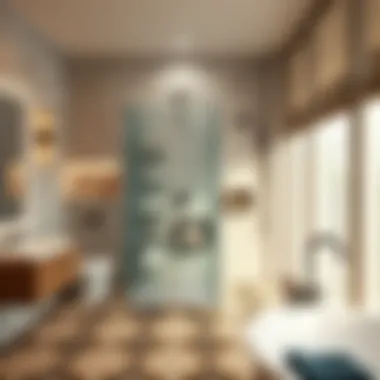
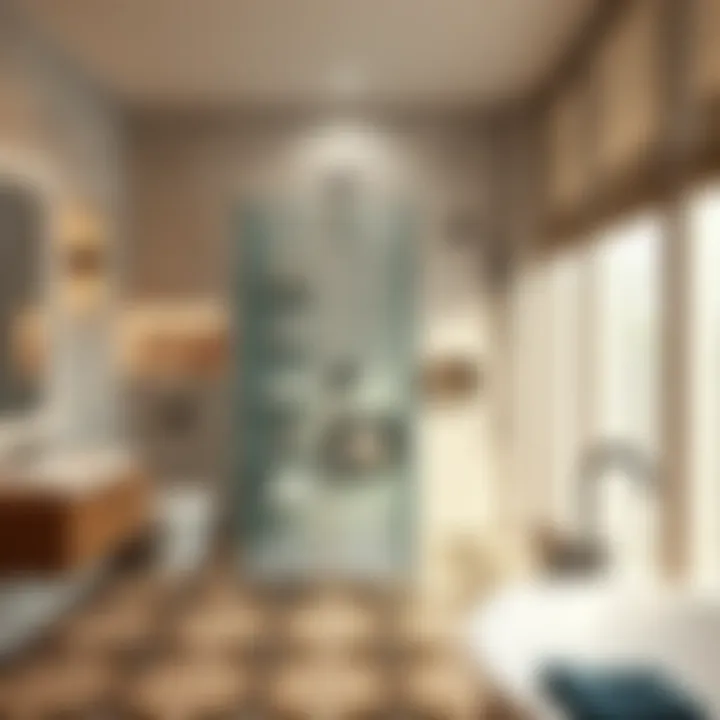
Furthermore, the ability to incorporate natural elements, such as stone or wood accents, can enhance the overall ambiance. A beautifully designed walk-in shower can even become the centerpiece of your bathroom.
Space Optimization
Walk-in showers can also be a game-changer in terms of space management. Unlike bathtubs that consume significant square footage, a well-placed walk-in shower can provide a more functional use of space. They allow for creative layouts that might not be possible with conventional setups. For instance, in tighter bathrooms, walk-in showers can be tucked into corners, freeing up room for additional features, like a double vanity or a linen closet.
Here are some space-saving advantages you can appreciate:
- Reduced Clutter: With built-in storage solutions, such as shelves or nooks, a walk-in shower can help keep toiletries organized without cluttering countertops.
- Fluid Layouts: The open design allows for a more fluid movement around the bathroom, which can be particularly beneficial in small spaces.
Design Considerations for Walk-In Showers
When thinking about a bathroom remodel, especially when it centers around a walk-in shower, design plays a vital role. It’s not just about choosing pretty tiles or fancy fixtures; it’s about creating a functional and inviting space that meets your lifestyle needs. Several critical factors come into play when designing walk-in showers, ensuring they’re not only aesthetically pleasing but also practical.
Dimensions and Layout
The dimensions and layout of your walk-in shower can drastically affect how you use the space. The general rule of thumb? Bigger isn’t always better. A thoughtfully designed shower should balance spaciousness with intimacy and accessibility. Ideally, you want enough room to move comfortably without feeling lost in a vast area.
Most walk-in showers should be at least 30 inches wide but aiming for 36 inches or more allows for ease of use. Take note of the layout; positioning a shower head at a height that accommodates the tallest family member can make a world of difference.
Additionally, consider how the flow of movement within the bathroom interacts with the shower. Do you want an enclosed feel, or perhaps a more open concept that allows for seamless transitions? Figuring this out during the design phase saves headaches later on.
Glass Panel Options
Choosing the right glass panel for your walk-in shower not only enhances the overall look but also impacts functionality. There are various styles—framed, semi-frameless, and frameless—that can either accentuate a modern vibe or fit into a more traditional aesthetic. Frameless designs, for instance, provide a sleek appearance and create the illusion of a larger space.
When selecting glass, think about thickness. Thicker panels offer superior durability and sound reduction, while also looking more impressive. Moreover, consider finishes too. Frosted glass provides privacy while still allowing light to seep through, whereas clear glass showcases those lovely tiles you’ve spent hours picking out.
"A well-designed glass shower can turn a mundane space into a luxurious sanctuary where everyday routines feel like indulgence."
Water Drainage Solutions
An essential yet often overlooked aspect of walk-in shower design is water drainage. Proper drainage ensures water flows away smoothly, preventing puddling and potential water damage. Options such as linear drains provide a contemporary look and functionality, as they allow for greater design flexibility and often support a seamless floor transition.
Plan for drainage correctly by considering the slope of your shower floor. Ideally, the floor should slant towards the drain to help ensure efficient water flow. Wrong pitch can lead to water pooling, resulting in a frustrating experience. Additionally, if you opt for tiled floors, tiny drain holes will help keep the water where it belongs, maintaining your floor's integrity.
Materials and Finishes
Choosing the right materials and finishes is pivotal when it comes to transforming your bathroom into a functional and elegant space. A walk-in shower, in particular, can significantly elevate the aesthetics of your bathroom while enhancing its practicality. Not only do the materials you select affect the overall look, but they also influence durability, maintenance, and even hygiene.
Tile Choices for Walk-In Showers
Tiles are the backbone of any shower design. They come in a variety of shapes, sizes, and materials, allowing homeowners to easily express their style. Popular options include:
- Ceramic and Porcelain: These materials are popular thanks to their water resistance and low maintenance needs. They are available in numerous colors and patterns.
- Natural Stone: Luxurious and unique, options like marble or slate can add an upscale feel to your shower. However, ensure they are sealed regularly to prevent water damage.
- Glass Tiles: Glass tiles reflect light, adding a sense of space in smaller bathrooms. They are sleek and contemporary but may require more effort to clean and maintain.
When selecting tiles, consider the texture as well. Slip-resistant options are crucial for safety, particularly if the shower does not have a designated slip-proof floor. An important point to remember is the visual continuity between the shower space and the rest of the bathroom.
Water-Resistant Materials
Humidity and water exposure are everyday realities in any bathroom, but especially in a walk-in shower. Therefore, incorporating water-resistant materials is a must for longevity. Some effective options include:
- Waterproof Drywall: Often referred to as green board, this type of drywall manages moisture better than traditional drywall, making it ideal for wet areas.
- Fiberglass: Strong and lightweight, fiberglass panels can replace traditional tiles, and some models can even come with built-in patterns, reducing installation time.
- Acrylic: This is another great option for shower surrounds. It is sleek, easy to clean, and highly resilient to water damage.
The key takeaway here is that the materials should not only look good but also serve the practical purpose of resisting mold and mildew growth. Regular maintenance checks become easier when your choice of materials is inherently resistant to these common issues.
Sustainable Options
Increasingly, homeowners are looking for materials that are not only beautifully crafted but also eco-friendly. Selecting sustainable options helps reduce your carbon footprint and leads to a healthier living environment. Here are some suggestions:
- Recycled Glass Tiles: Utilizing recycled materials for tiles not only lessens environmental impact but also gives a distinctive charm to your shower design. Each tile can come with its own hue and texture.
- Bamboo: Known for its rapid growth, bamboo is a renewable resource that can be used for various fixtures, including shelving and accents within the shower.
- Low-VOC Paints and Finishes: When you finish your shower walls, going for low volatile organic compound options reduces harmful emissions, contributing toward healthier indoor air quality.
Sustainable choices align with modern-day demands for environmental consciousness without compromising on style or functionality. As you explore these materials, remember that blending sustainability with beauty can create a personal oasis within your home.
"When it comes to materials in bathroom remodeling, choosing wisely can lead to years of enjoyment and satisfaction."
By being thoughtful about the materials and finishes you select, it is possible to build an elegant and lasting walk-in shower that serves your specific needs, reflects your style, and contributes positively to the environment.
Lighting and Ambiance
When embarking on a bathroom remodel, it’s easy to overlook the impact of lighting and ambiance on the overall experience of the space. Proper lighting does more than just illuminate; it creates mood, enhances aesthetics, and ensures functionality, especially in a walk-in shower setting. A well-lit bathroom can make mornings brighter, while soft, ambient light can transform it into a serene sanctuary for relaxation. Thus, understanding how to manipulate light effectively is essential in the design journey.
Natural Light Utilization
Utilizing natural light in your bathroom offers a host of benefits. First off, it adds a dynamic quality that artificial lights simply can't match. If your bathroom has windows, you should take full advantage of them. For instance, consider installing frosted glass or sheer curtains to maintain privacy while still allowing plenty of sunlight to pour in. This could enhance the visual space, making even a smaller bathroom feel more expansive.
- Position of Windows: Think about placing windows strategically; high windows can flood the room with light without compromising privacy.
- Skylights: In cases where privacy is a concern and there are no side walls, a skylight offers an excellent solution, allowing daylight to flood in from above without sacrificing seclusion.
Being creative with natural light does wonders for the shower area too. Imagine stepping into a walk-in shower that feels like an open-air sanctuary, giving that refreshing feel of bathing under the sky, even while indoors.
Artificial Lighting Solutions
When it comes to lighting fixtures, options abound, and it can feel overwhelming. It's crucial to strike a balance between strong task lighting and softer ambient options. Downlights over the shower can ensure safe visibility while also providing the necessary illumination for grooming tasks. Here are a few lighting solutions you might consider:
- Vanity Lights: Flanking mirrors with LED fixtures can help eliminate shadows, making your routines hassle-free.
- Recessed Lighting: If you're leaning towards a clean look, recessed lights could be an excellent choice for general illumination.
- Accent Lighting: Additional fixtures can highlight beautiful tiles or design features, adding layers to the space.
These layers of light can create depth, making your bathroom not just functional but also visually stimulating. It's like adding spices to a meal; the right combinations make all the difference.
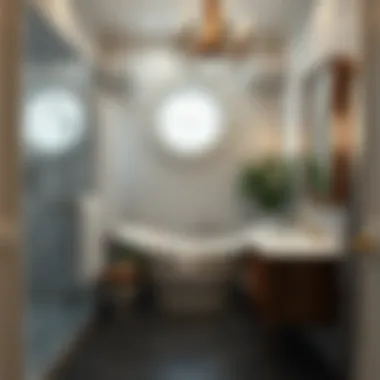
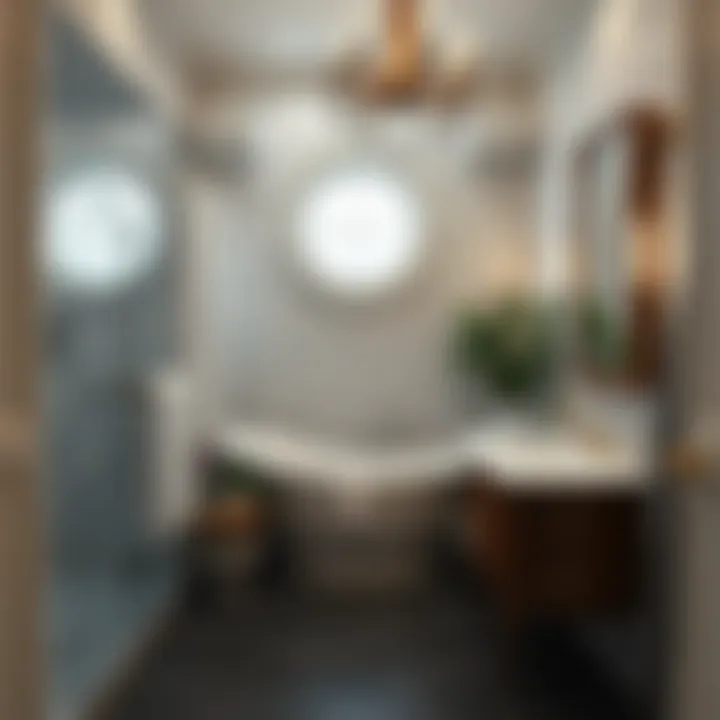
Creating Relaxing Environment with Lighting
Lighting can play a pivotal role in fostering a calming environment, particularly in a space designed for relaxation. To morph your bathroom into a peaceful retreat, consider the following tips:
- Dimmer Switches: Installing dimmers gives you the ability to adjust the ambiance according to your needs. Bright light during the day can shift to a more subdued tone in the evening for a soothing bath.
- Color Temperatures: Warmer light tones can help in setting a tranquil atmosphere. Look for bulbs labeled as “warm white” for that cozy feeling.
- Scented Candles and Soft Lights: Mixing natural candles with soft lighting can create a warm, inviting vibe. The flickering of candle flames alongside your ambient lighting envelops the space in a gentle glow that’s perfect for unwinding after a long day.
In an era where self-care is increasingly significant, having a bathroom that serves as an oasis is no longer merely aspirational; it's necessary. The right lighting can facilitate relaxation and enhance the overall experience, turning your bathroom into a true sanctuary.
"The right lighting can completely transform your bathroom – enhancing its functionality and creating a tranquil retreat where you can escape the hustle and bustle of everyday life."
By thoughtfully incorporating natural and artificial lighting solutions, as well as establishing a calming ambiance, your walk-in shower can evolve into a space that uplifts and rejuvenates.
For additional inspiration, check resources like Wikipedia or explore forums on Reddit that discuss various homeowner insights.
Shower Features to Consider
When transforming a bathroom, especially with a walking shower, the finer details can set the tone for the entire space. It's not just about having a place to wash off the day; it’s about crafting an experience. Considering various shower features can lead you down a path of personal comfort, efficiency, and overall satisfaction with the end product. Let's dive into some essential characteristics that deserve a spot on your radar.
Water Pressure and Shower Heads
Water pressure plays a crucial role in your showering experience. A steady flow is essential, not just for comfort but also for effectively rinsing off soap and shampoo. Before you get too invested in designs, evaluate the pressure in your current plumbing. Sometimes, existing pressure can be inadequate, leading to frustrating experiences like dribbles instead of a refreshing cascade.
Choosing the right shower head can make all the difference. Options range from hand-held sprayers to luxurious rainfall styles that mimic a gentle downpour. Consider features such as:
- Adjustability: Some shower heads allow you to switch between different spray patterns, great for when you want a calming mist or a vigorous rinse.
- Water-saving technology: Modern designs often comply with eco-friendly standards while still offering strong performance.
- Ease of cleaning: Rubberized nozzles help to prevent buildup, making maintenance simpler.
In short, the right shower head can transform a mundane wash into a rejuvenating ritual.
Spa-Like Features
In today’s fast-paced world, transforming your shower into a spa-like retreat can be a game-changer. It’s not just about cleansing; it’s about immersing yourself in a moment of tranquility. Here are a few ways to achieve that serene atmosphere:
- Steam Options: Some walk-in showers can be fitted with steam generators, creating a soothing environment, much akin to a sauna. This not only helps in relaxation but also offers skin benefits.
- Mood Lighting: Implement LED lighting that changes color, allowing you to select hues that fit your mood. Calming blues and greens can aid relaxation, while warm whites provide that therapeutic feel.
- In-Shower Seating: Integrated benches or stools can make your shower more accessible and provide a comfortable space to sit while enjoying the steam or splashes.
By incorporating these features, you craft a space that isn’t just functional but also a personal oasis.
Built-In Storage Solutions
Let's face it, clutter can ruin the most well-designed spaces. Integrating storage into your walk-in shower design is a wise decision that maximizes both space and organization. Here are some clever storage solutions to consider:
- Recessed Shelving: Built-in nooks provide handy space for shampoo, soap, and other essentials without taking away from the sleek look of the interior.
- Corner Caddies or Shelves: Utilize often-overlooked corners to install small shelves, ideal for keeping products within arm’s reach.
- Grab Bars with Function: Differentiate between purely decorative elements and functional pieces by using grab bars that double as shelving space. They can be handy for holding items while also enhancing safety.
By focusing on effective storage solutions, you not only declutter your shower area but also ensure that all your necessary items are easily accessible, enhancing your bathing experience.
Cost Factors in Remodeling a Bathroom
When it comes to transforming your bathroom into a serene oasis, understanding the cost factors involved is essential. Walk-in showers can be a centerpiece in bathroom renovations, but the expenses can add up quickly if you're not careful. Grasping the financial aspects prepares you for the journey ahead. You’ll want to strike a balance between desires and budget—it's crucial in ensuring your project runs smoothly without breaking the bank.
Budgeting for Materials and Labor
Creating a budget for your bathroom remodel begins with identifying what materials you will need and the cost of labor. Walk-in showers typically require durable materials due to constant exposure to water. Let’s break it down:
- Materials: The cost can vary widely based on the style and quality. For instance, porcelain tiles are often priced around $1 to $30 per square foot, while natural stone like marble might cost upwards of $10 to $50 per square foot. When choosing tiles, consider their slip-resistance, durability, and maintenance needs.
- Labor Costs: Hiring professionals can range from $50 to $150 per hour. If you're looking at a full remodel including plumbing, you might be looking at about 30% of your total budget going to labor alone. However, the complexity of your design can greatly affect these figures.
Keeping track of all these numbers is vital. If you don’t want to end up with a nasty surprise when the bill arrives, ensure each item is clearly accounted for. It could be helpful to break down the budget into sections, possibly using a simple spreadsheet or even a notepad app on your phone.
Cost-Saving Tips
Overhauling your bathroom doesn’t have to mean tossing your entire savings into a bottomless pit. Here’s how you can be savvy about spending:
- Explore Alternatives: Instead of high-end materials, consider mid-range options that deliver style without the exorbitant cost.
- DIY Elements: If you're handy, think about tackling parts of the renovation yourself. For instance, installing tiles or repurposing fixtures can save a considerable amount.
- Get Multiple Quotes: When hiring contractors, ask for estimates from various professionals. This gives you a clearer picture and helps you spot the best deal.
- Timing is Key: If you can wait, consider off-season times for renovations, as many contractors offer discounts during slower months.
- Shop Sales: Keep an eye on sales at home centers. Plan purchases around holiday sales or clearance events, which can significantly lower your bills.
"A stitch in time saves nine"—put in some effort upfront to save money and reduce headaches down the line.
DIY versus Professional Installation
When it comes to remodelling your bathroom with a walk-in shower, the decision between DIY installation and hiring a professional can be crucial. Each option has its own share of considerations. Understanding these implications can lead to a renovated space that meets your needs and expectations.
When to Consider DIY
Opting for DIY installation for a walk-in shower may be appealing for several reasons. Foremost among these is cost. Labor can be one of the biggest expenses in a renovation; taking it upon yourself can save you a significant amount of money. If you're handy and have previous experience with home improvement projects, this may be a viable option. Moreover, DIY gives you complete control over the project. You can style it to your liking without the need to compromise with a professional who might have different ideas.
However, it's important to assess your own skill levels honestly. Complexities arise in plumbing, waterproofing, and drainage that may be daunting for most homeowners. If you encounter an unexpected issue, such as a plumbing problem or a miscalculated measurement, you could find yourself in a tight spot.
Here are some factors to help you decide:
- Skill Level: Assess your ability to handle tools and techniques.
- Time Commitment: Consider how much time you can allocate; DIY can be time-consuming.
- Project Scale: Simpler layouts may lend themselves to DIY more than intricate designs.
- Resources: Do you have access to the right materials and tools?
Advantages of Professional Help
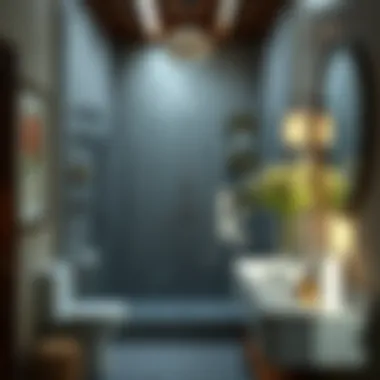
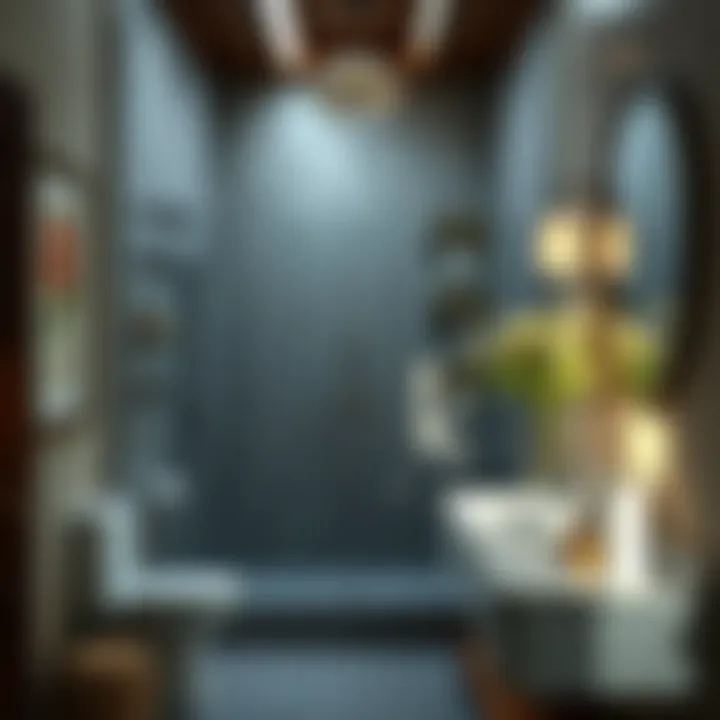
Bringing in a professional can ensure that the renovation goes off without a hitch. Their expertise not only brings peace of mind but also increases the likelihood that the project's execution will meet industry standards. Professionals often bring valuable insights and creative ideas that you might not think of. They can foresee potential problems and navigate them expertly.
Moreover, a professional installer understands the code requirements and regulations associated with bathroom renovations. This compliance is crucial. Failing to adhere to guidelines can lead to headaches down the road, including costly fines or complications during future home sales.
Here are key advantages to hiring a professional:
- Time Efficiency: Professionals work faster and can finish projects timely.
- Quality Workmanship: Their skills often result in a polished, high-quality finish.
- Warranty Options: Many remodelers offer warranties on their work, adding an extra layer of security.
- Stress Reduction: With a pro at the helm, you can shift your focus to enjoying the end result rather than fretting over the details.
Going the DIY route or choosing professional help ultimately comes down to personal preference and capability. Each option has merit and can lead to a stunning walk-in shower that elevates your bathroom experience.
Maintenance and Care for Walk-In Showers
Maintaining a walk-in shower isn’t just about keeping it looking nice; it’s crucial for ensuring longevity and protecting your investment. Over time, the daily wear and tear can lead to mold, buildup, or even structural issues. This section addresses why regular upkeep is essential and how to do it effectively, providing a roadmap to a functional and beautifully maintained shower space.
Regular Cleaning Practices
To keep your walk-in shower sparkling clean, it's important to establish a cleaning routine that works for your lifestyle. Here are a few steps that can make this task simpler:
- Daily rinse: After each use, give your shower a quick rinse down to remove soap residue and prevent hard water build-up. This simple act can go a long way in maintaining its appearance.
- Weekly cleaning: Devote a few minutes each week to a more thorough clean. Use a soft sponge or cloth to apply a mild, non-abrasive cleaner. This will prevent the formation of stubborn stains and ensure the tiles and glass remain clear.
- Focus on grout: Grout often captures dirt and grime; using a toothbrush dipped in a mixture of water and baking soda can help lift stains and whiten discolored grout lines.
- Ventilation: Make sure to ventilate the space by leaving the door open or using an exhaust fan to reduce moisture after showering. This step helps prevent mildew and mold growth, which can be particularly troublesome in humid areas.
Remember, a little regular maintenance can save you a heap of trouble down the line.
Preventative Measures for Longevity
Preventative care is key to extending the lifespan of your walk-in shower. A few simple practices will help you dodge potential headaches down the road:
- Seal grout and tile: Depending on the type of tile and grout you use, sealing may be necessary to prevent water infiltration and staining. Research suitable sealants for the specific materials you chose.
- Inspect periodically: Regularly check for any leaks or cracks in the structure. Early detection can save costly repairs. It’s good practice to tighten shower fixtures and look for signs of water damage.
- Avoid harsh chemicals: Many commercial cleaners contain ingredients that can degrade materials over time. Opt for eco-friendly brands or make your own cleaners with vinegar and baking soda to keep the waterworks shining without harmful effects.
- Careful with decor: If you have decor items like plants or soaps, be mindful of their placement. They can collect water or lead to mildew growth if left in the wrong spot.
Adopting these practices will help protect your upgraded space from damage, mold growth, and discoloration. By taking the time to maintain your walk-in shower, not only do you enhance its lifespan, but you also create a serene and appealing environment for your daily ritual.
Inspiration Gallery
Creating a captivating bathroom that embodies both functionality and style can sometimes feel overwhelming. This is where an inspiration gallery shines, serving as a treasure trove of ideas for homeowners who are considering a transformation through a walk-in shower. Not only does it provide a visual feast, but it also sparks creativity and helps clarify personal preferences and desires.
The Purpose of an Inspiration Gallery
An inspiration gallery is essential for a few key reasons. Firstly, it showcases diverse design styles that can range from ultra-modern to cozy and classic. This variety allows homeowners to explore different atmospheres, colors, and materials without the commitment of purchasing or redesigning yet.
Secondly, it acts as a guide to understanding trending features that might be appealing. From intricate tile patterns to innovative lighting solutions, seeing how designs come together helps in visualizing how these elements can fit into one's existing space. Understanding what’s possible fuels the decision-making process, sparking ideas that might not have been considered initially.
Modern Walk-In Shower Designs
Modern designs bring freshness and a clean aesthetic that can ultimately elevate a bathroom. Here are a few standout features:
- Minimalist Aesthetics: A focus on simplicity, where less truly is more. Keep lines clean and shapes geometric.
- Continuous Flooring: Using the same material across the bathroom floor and the shower enhances the seamless look and is practical for cleaning.
- Statement Tiles: Bold graphic tiles can serve as a centerpiece. Whether using large-format tiles or playful patterns, this option adds character without overwhelming the space.
Key Ideas:
- Glass Enclosures: These create an illusion of more space and allow light to flow, making the area feel airy and bright.
- Hidden Drain Systems: Modernize the look while tackling water flow more efficiently.
Classic Walk-In Shower Styles
Classic styles tell a different story, embracing warmth and nostalgia without compromising elegance. Some common attributes include:
- Subway Tiles: Known for their timeless appeal and versatility, these tiles look great in both contemporary and traditional settings.
- Vintage Fixtures: Incorporating antique-style faucets or showerheads can elevate the aesthetic dramatically. They add character and invite stories from the past into your modern home.
- Soft Color Palettes: Earthy tones and soft pastels create a calming environment, often evoking a spa-like experience.
Design Inspirations:
- Curved Glass Partitions: These can soften the lines of the bathroom, making it feel more inviting while still providing adequate water control.
- Decorative Molding: Adding a touch of elegance, intricate details or crown molding can tie the design together beautifully.
In essence, an inspiration gallery serves not only as a visual resource but also as a crucial step towards making informed decisions in the remodeling journey. Homeowners can draw from contemporary trends and classic designs alike, ultimately crafting a walk-in shower that reflects their personal story and enhances their daily armchair escape.
The End and Future Trends
A bathroom remodel focusing on a walk-in shower not only enhances the visual appeal of the space but also adds significant value to a home. The importance of the topic Conclusion and Future Trends stems from various factors, including advancements in design, evolving user needs, and sustainability. As we step into a future rich with possibilities, understanding these aspects is paramount for homeowners and remodelers alike.
Forecasting Bathroom Design
Forecasting the design of bathrooms involves an understanding of trends as well as personal preferences. Currently, minimalism is favored by many, with an emphasis on clean lines and uncluttered spaces. Utilizing materials that evoke a sense of tranquility, like natural stones and neutral colors, is continuing to gain popularity. Homeowners are increasingly looking for pieces that not only serve a functional purpose but also contribute to a serene atmosphere.
Moreover, an increasing number of people are opting for larger walk-in showers that offer an open feel, as opposed to traditional tub-shower combos. Open-concept bathrooms are also on the rise. Functional artistry, like wall-mounted sinks, or floating vanities add to the charm without crowding the space.
With designs projecting towards open spaces, it encourages not only functionality but also aesthetics, painting a picture of a restful retreat right in one's home. Sustainability comes into play too, as more individuals are opting for water-saving fixtures to mitigate the use of resources while maintaining luxury. All in all, anticipating these shifts in design preferences aids in crafting a space that remains both timely and timeless.
Integrating Technology in Bathrooms
The integration of technology into bathrooms is transforming how people interact with their spaces. Voice-activated controls, smart shower systems, and automated lighting solutions are no longer the stuff of science fiction. They offer homeowners the ability to adjust settings with a touch or even a spoken command.
Consider innovative features like digital shower displays that allow users to set water temperature, pressure, and even timing directly from a touchscreen interface. Such conveniences enhance the showering experience beyond simple cleanliness into a realm of luxurious comfort.
Furthermore, the advent of smart mirrors equipped with LED lighting and anti-fog features is reshaping daily routines. Such mirrors can provide information at a glance: the weather, news headlines, or even reminders—all while ensuring a flawless reflection.
Integrating sustainable technology also aligns with modern values. Systems that recycle water or offer real-time usage statistics can help users be more conscious of their consumption. As technology continues to dominate the landscape, the bathroom of the future stands to become a sanctuary of efficiency and relaxation, a blend of comfort and advanced functionality.
“Technology is not just about convenience; it’s about creating an experience that fits seamlessly into our lifestyles.”
Thus, as we reflect upon these conclusions and future trends, it's clear that embracing the combination of design evolution and technological advancement paves the way for a truly transformative bathroom experience. Moving forward, the balance between aesthetics, functionality, and sustainability will play a crucial role in creating bathrooms that cater to the modern homeowner’s needs.



